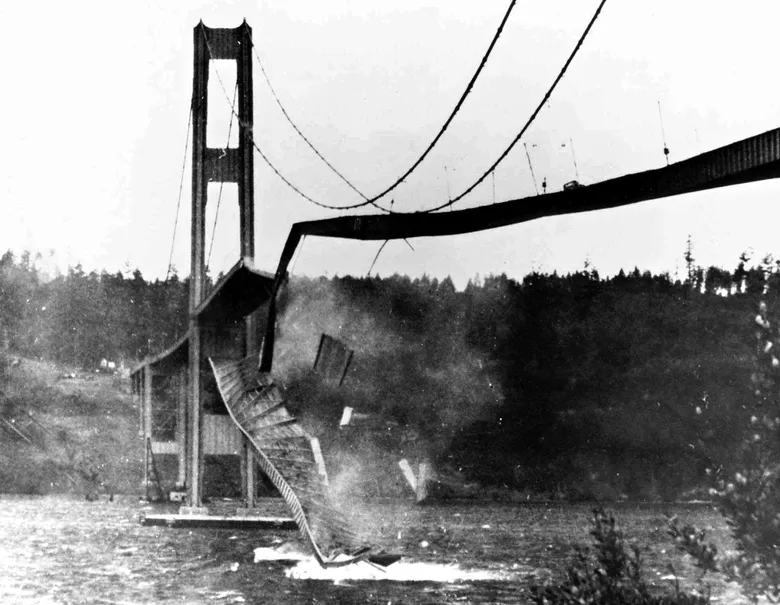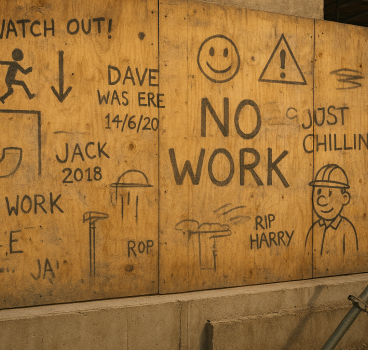“Galloping Gertie” - the bridge with a wind problem
In 1940, Washington state, USA, witnessed a marvel of modern engineering. The Tacoma Narrows Bridge, a majestic suspension bridge, which promised a brighter future officially opened, connecting Tacoma to the nearby Kitsap Peninsula. But this bridge had a secret, a weakness hidden in its very design, a problem that would soon turn it into a modern-day disaster.
At the time of its construction, the bridge's design was considered to be sleek and modern. Unlike more traditional bridges with their web of trusses, the Tacoma Narrows structure featured a smooth, streamlined deck. However, this innovation, aimed at reducing wind resistance, had a nightmarish side effect. As the wind blew, the bridge didn't just bend - it swayed. In fact, it swayed so wildly, it earned the nickname "Galloping Gertie" from the construction workers who braved the building process.
The reason for these unnerving movements was a phenomenon called vortex shedding. As wind swept across the bridge's stiff deck, it created lift on one side and downforce on the other. Imagine a flag flapping in the wind, but on a much grander, more terrifying scale. The swirling air created a feedback loop, pushing the bridge to twist and turn with increasing violence.

Reports at the time suggested that the bridge was like a ballerina caught in a hurricane. Stiff and inflexible, Gertie lacked the grace to counter the wind's rhythm. On a fateful day in November 1940, with winds reaching a mere 40 miles per hour, the bridge entered a final, horrifying spiral. The twisting became uncontrollable, the steel deck ripping apart in a shower of sparks and metal. Gertie collapsed into the unforgiving waters, a monument to a design that forgot the power of a good breeze.
Thankfully, the bridge's demise claimed only one life – a dog tragically left behind in a car. But Gertie's fall left a lasting mark. It shattered the illusion of engineering invincibility and ushered in a new era of bridge design. Wind tunnels became a mandatory stop for any aspiring bridge and the importance of flexibility became paramount.
The Tacoma Narrows Bridge may not have stood the test of time, but its legacy lives on. It's a reminder that even the most impressive structures have vulnerabilities and that true strength comes from understanding the forces we can't always see.
Today, a new bridge graces the Tacoma Narrows, a testament to the lessons learned from Gertie's tragic demise. It sways ever so slightly, a subtle homage to its predecessor, a reminder of the day the wind taught us a valuable lesson - that bridges need to be able to move with the rhythm of the world.
Additional Articles

Is construction site graffiti a form of folk history?
Walk onto almost any construction site and you will find writing, sketches and markings that serve a purpose beyond the practical. On timber hoarding, concrete shuttering, plasterboard and steel,...
Read moreWhat construction can learn from Ant colonies about logistics and site movement
If you want to witness flawless logistics, responsive movement and coordinated planning in action, you do not need to observe a hyper-automated warehouse or a cutting-edge construction site - you...
Read more

Why everyone has a favourite skip and what it says about you
In construction, there are two universal truths – tea, of course, is essential and believe it or not, everyone - whether they are prepared to admit it - has a favourite skip. It may sound strange,...
Read more